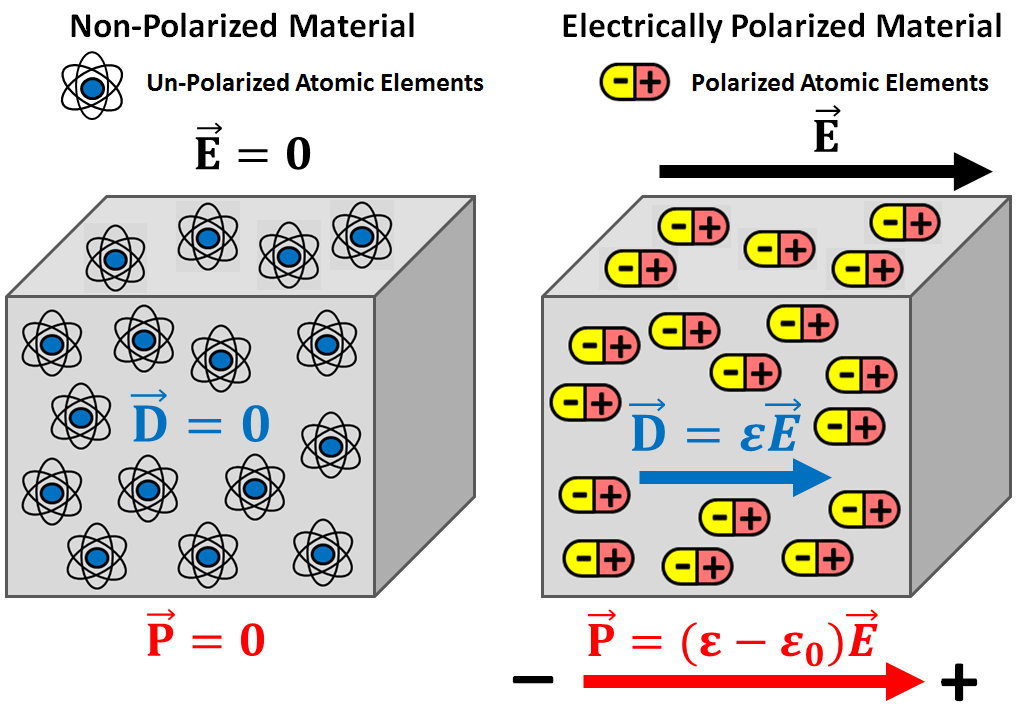Dielectric Permittivity
Dielectric permittivity is a diagnostic physical property which characterizes the degree of electrical polarization a material experiences under the influence of an external electric field. Dielectric permittivity is the primary diagnostic physical property in ground penetrating radar (GPR).
Constitutive Relationship
Dielectric permittivity (\(\varepsilon\)) is defined as the ratio between the electric field (\(\vec E\)) within a material and the corresponding electric displacement (\(\vec D\)):

When exposed to an electric field, bounded electrical charges of opposing sign will try to separate from one another. For example, the electron clouds of atoms will shift in position relative to their nuclei. The extent of the separation of the electrical charges within a material is represented by the electric polarization (\(\vec P\)). The electric field, electric displacement and electric polarization are related by the following expression:
where the permittivity of free-space (\(\varepsilon_0 = 8.8541878176 \times 10^{-12}\) F/m) defines the relationship between \(\vec D\) and \(\vec E\) if the material is non-polarizable. Therefore, the dielectric permittivity and the electric displacement define how strongly a material becomes electrically polarized under the influence of an electric field.
Relative Permittivity
The dielectric properties of materials are generally expressed using the relative permittivity (\(\varepsilon_r\)). The relative permittivity defines the dielectric properties of a material relative to that of free-space:
The relative permittivity is both positive and \(\geq 1\). The typical range of values for rocks and other important materials can be found here.
Dielectric Susceptibility
The electrical polarization within a material can be defined in terms of the electric field as follows:
where \(\chi_e\) is known as the electric susceptibility. Note that the polarization is always parallel to the electric field. The electric susceptibility should not be confused with the magnetic susceptibility, as they describe different physical processes.
Importance to Geophysics
Dielectric permittivity is the primary diagnostic physical property in ground penetrating radar (GPR). Dielectric permittivity impacts the attenuation, wavelength and velocity of radiowave signals as they propagate through the Earth. It also determines the reflection and refraction of radiowave signals are interfaces. The impact the of the Earth’s dielectric permittivity on EM systems is only significant for sufficiently high operating frequencies. As a result, dielectric permittivity is generally neglected when using most EM systems. These include: time-domain EM (TDEM), frequency-domain EM (FDEM), direct current resistivity (DCR), induced polarization (IP) and natural source EM (MT and ZTEM).